Feeding for Calm Behaviour
There is nothing quite as unnerving or unenjoyable as riding a horse that is completely full of itself and constantly reacting before thinking. On a more subtle level, a horse that won’t concentrate or continually overreacts to aids is frustrating. While education plays a major role in determining a horse’s behaviour under saddle, feeding can also have an impact.
What you feed, how much you feed, and when you feed it can make a big difference. Here are some tips for feeding to assist your horse to maintain a calm and responsive attitude under saddle.
6 Feeding Tips for Calm Behaviour in Your Horse
1. Feed a forage based diet
Forage is soooo important when it comes to thinking about how to feed for calm behaviour! Here is why!
- Chewing forage keeps a horse more mentally relaxed and calm. If they have a forage based diet, with an absolute minimum of 1.5% of their bodyweight in forage per day (7.5kg for a 500kg horse) they spend more time chewing and mentally content which is then reflected in their behaviour.
- Forage encourages the production of large amounts of saliva which buffers the acidity of the stomach fluid, keeping a horse more comfortable and calm.
- Forage provides the fibre that is able to stop acid splashing around in the stomach. If a horse’s stomach is empty because there is not enough forage in the diet, the gastric acid can splash up onto the unprotected upper (squamous) region of the stomach, ‘burning it’ and causing discomfort. This discomfort can potentially lead to changes in behaviour.
- Forages feeds the ‘good bacteria’ in a horse’s gastrointestinal tract. These bacteria then produce B-vitamins and hormones that are crucial for maintaining normal behaviour.
- A high forage diet is also typically low in grain and therefore starch. Research has shown that these low starch diets are less likely to cause changes in behaviour.
- Low starch diets are also less likely to result in starch overload to the hindgut. When starch overload does occur, bacterial populations shift toward the ‘bad’ starch fermenting bacteria and hindgut acidosis can result. Shifting bacterial populations and hindgut acidosis will both cause unwanted changes in behaviour.
2. Don’t feed too much
Horses that are fed more than they need for the work they do can become hyperactive and difficult to control. When feeding your horse, be careful to define your horse’s workload carefully and feed it accordingly. FeedXL defines light, moderate, and heavy work as follows:
Light Work: 1 to 3 hours per week of walking (40%), trotting (50%) and cantering (10%).
Moderate Work: 3 to 5 hours per week of walking (30%), trotting (55%), cantering (10%) and skill work such as low grade jumping, dressage or cutting (5%).
Heavy Work: 4 to 5 hours per week of walking (20%), trotting (50%), cantering (15%) and galloping or skill work such as high-level jumping, dressage, or cutting (15%).
Not only does the total number of hours of work need to be considered, but the type and speed of work must be taken into account as well. Classifying your horse in a workload higher than they actually are and overfeeding is possibly the most common cause of hyperactivity (and equine obesity). Once you classify your horse’s workload correctly, use the Digestible Energy requirement calculated by FeedXL as a guide to how much you need to feed.
3. Alter feeding according to daily workload
If your horse tends to become hyperactive, especially following a day off, reducing the amount you feed from a working ration back to a maintenance ration on days off can help to solve this issue. Developing one diet for days your horse is ridden and another with similar ingredients but smaller portions for days off means your horse is only being fed what he needs on any given day. This method of feeding can help keep your horse calm and his behaviour more regular.
To take this one step further, if you work your horse at varying intensities on different days you may develop a couple of different working diets. For example, if you lunge your horse for 30 minutes two days a week (light work), trail ride for 1.5 hours mainly at the walk and trot with some cantering 2 days per week (moderate work) and have dressage and show jump lessons or competitions 2 days per week for 1.5 to 2 hours each with mostly trotting and cantering as well as skill work (heavy work) and your horse has 1 day off you could have a maintenance diet for the day off, a light work diet for the lunging days, a moderate work diet for the trail days and a heavy work ration for the lesson and competition days. That way you are constantly adjusting feeding to suit workload and avoiding overfeeding.
4. Feed ‘cool’ feeds
Fibrous feeds that are fermented in the hindgut to release energy are the most natural and also the ‘coolest’ sources of energy for horses. Feeding forages like pasture, hay, and chaff to provide the majority of the energy in your horse’s diet will help to keep your horse calm and responsive.
Horses in light work should be able to happily exist on a diet made up almost entirely of forages with supplements added if and when needed (use FeedXL to determine when supplements are needed and which fit the diet best). So, if your horse is in light work, don’t be too quick to reach for ‘hard feeds’, stick with forages, especially if your horse’s temperament is an issue.
However, horses in moderate to heavy work often need higher energy feeds added to their diet as most physically can’t eat enough forage to meet energy requirements. In these situations where energy requirements can’t be met by forage alone, cool energy sources such as high energy fibres (sugarbeet pulp, soybean hulls, lupin hulls and copra meal), oils and high oil feeds like rice bran can be used to boost energy intake without impacting on a horse’s behaviour (though there is no guarantee).
5. Avoid ‘hot’ feeds
Grains and grain based feeds, molasses and forages like alfalfa/lucerne hay tend to be commonly blamed for making horses ‘hot’. Whether this is because they do actually make horses hyperactive, or because they are energy dense feeds that are easy to overfeed and therefore by default make horses hot is hard to determine. In any case, if your horse reacts to grains, grain-based feeds or forages like alfalfa, avoid using these in the diet.
To make it easy to avoid any feeds that contain grains or molasses, simply tick the ‘Grain Intolerant’ box when entering your horse’s details in FeedXL and any feeds or supplements containing grain, grain by‐ product or molasses will be marked in RED.
6. Feed a balanced diet
Some deficiencies like vitamin B1 (thiamine) and magnesium can have an impact on your horse’s behaviour. Use FeedXL to make sure your horse’s requirements for these and other important nutrients are met and avoid nutrient deficiencies that can alter your horse’s behaviour. If you’re not yet a member, click here to learn more.
A note on calming supplements
There are a plethora of ‘calming’ supplements on the market aimed at helping to calm a hyperactive horse. Whether these supplements work or not is difficult to establish. Many studies have been conducted to assess their effectiveness with contradicting results. Most however are safe supplements, commonly containing large amounts of the water soluble (and hence virtually non‐toxic) vitamin B1. Some also contain magnesium and an amino acid called tryptophan.
If you are fine tuning your horse’s feeding regime to ensure you are not overfeeding, adjusting feeding according to daily workload, feeding a diet based on forage, using cool energy sources when needed and feeding a balanced diet PLUS have your horse well educated and its behaviour is still a problem, then trying calming supplements to see if they have a positive impact is a feasible option. If they work, keep using your chosen supplement. If they don’t, keep adjusting the diet and working on education until the right balance is struck.
Join FeedXL today and take control of your horse’s nutrition
Get EVEN MORE practical and personalised feeding guidance when you sign up to FEEDXL.
Do you have a question or comment? Do you need help with feeding?
We would love to welcome you to our FeedXL Horse Nutrition Facebook Group. Ask questions and have them answered by PhD and Masters qualified equine nutritionists and spend time with like-minded horse owners. It’s free!
Click here to join the FeedXL Horse Nutrition Facebook Group



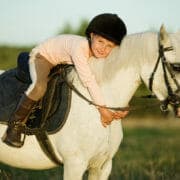
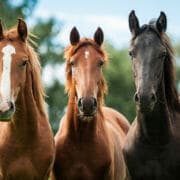
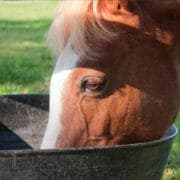
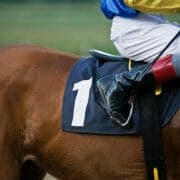

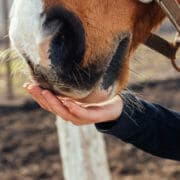



Trackbacks & Pingbacks
[…] Read Full Article […]
Comments are closed.